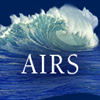|
Kristin Zeiden Research Scientist/Engineer - Senior kzeiden@uw.edu Phone 206-543-9891 |
Education
B.S. Astrophysics, University of California, Los Angeles, 2011
Ph.D. Oceanography, University of California, San Diego, 2021
|
Publications |
2000-present and while at APL-UW |
Observations of elevated mixing and periodic structures within diurnal warm layers Zeiden, K., J. Thomson, A. Shcherbina, and E. D'Asaro, "Observations of elevated mixing and periodic structures within diurnal warm layers," J. Geophys. Res., 129, doi:10.1029/2024JC021399, 2024. |
More Info |
9 Nov 2024 |
|||||||
|
Surface drifters (SWIFTs) equipped with down-looking high-resolution acoustic doppler current profilers (ADCPs) were used to estimate the turbulent kinetic energy (TKE) dissipation rate (ε) within highly stratified diurnal warm layers (DWLs) in the Southern California Bight. Over a 10-day period, five instances of DWLs were observed with strong surface temperature anomalies up to 3°C and velocity anomalies up to 0.3 m s-1. Profiles of ε in the upper 5 m suggest turbulence is strongly modulated by the DWL stratification. Burst-averaged (8.5 min) ε is stronger than predicted by law-of-the-wall boundary layer scaling within the DWLs and suppressed below. Predictions for ε within the DWLs are improved by a shear-production scaling using observed shear and linearly decaying turbulent stress. However, ε is still under-predicted. Examination of the un-averaged acoustic backscatter data suggests elevated ε is related to the presence of turbulent structures in the DWLs which span the layer height and strongly modulate TKE. Evolution in the bulk Richardson number each day suggests the DWLs become unstable to layer-scale overturning and entrainment each afternoon, thus the turbulent structures may result from shear-driven instability. This interpretation is supported by a conditional average of the data during a burst characterized by strongly periodic structures. The structures resemble high-frequency internal waves with strong asymmetry in the along-flow direction (steepening) which suggests they are unstable. Coincident asymmetric patterns in upwelling/downwelling and corresponding regions of strong vertical convergence/divergence suggest that both vertical transport and local TKE generation are plausible sources of elevated ε in the DWLs. |
|||||||||
Measuring turbulence from wave-following platforms Zeiden, K., and J. Thomson, "Measuring turbulence from wave-following platforms," In Proc., IEEE/OES 13th Current, Waves and Turbulence Measurement (CWTM), 18-20 March 2024, Wanchese, NC, doi:10.1109/CWTM61020.2024.10526345 (IEEE, 2024). |
More Info |
15 May 2024 |
|||||||
|
Autonomous surface platforms equipped with pulse-coherent high-resolution (HR) ADCPs are a promising tool for measuring turbulence and estimating turbulent dissipation rates, ε(z), close to the air-sea interface. However, surface gravity waves generate significant bias in ε(z) if not sufficiently separated from the turbulent signal. In a previous study, the authors developed a method of isolating wave orbital velocities from the data using empirical orthogonal functions (EOFs). Low-mode EOFs had characteristics of surface gravity waves, while higher-mode EOFs had characteristics of turbulence. After filtering empirical wave profiles constructed from the low-mode EOFs from the data, resultant ε(z) were in close agreement with law-of-the-wall scaling during quiescent conditions. In this study, we further validate the EOF-filtering technique by comparing EOFs of the HR ADCP data with those computed from synthetic wave data which does not contain turbulence. As expected, low-mode EOFs of the synthetic data are in strong agreement with those of the real data, while high-mode EOFs reflect only noise due to the absence of turbulence. Wave profiles constructed from the low-mode EOFs are then used to quantify the potential for bias in ε(z) if wave velocities are not sufficiently filtered from the data. |
|||||||||
Calibration and Processing of Nortek Signature1000 Echosounders Bassett, C., and K. Zeiden, "Calibration and Processing of Nortek Signature1000 Echosounders," Technical Report, APL-UW TR 2307, Applied Physics Laboratory, University of Washington, Seattle, December 2023, 40 pp. |
More Info |
27 Dec 2023 |
|||||||
|
The five-beam Nortek Signature series acoustic Doppler current profilers (ADCPs) include a vertical beam that can be operated as an echosounder. These echosounders record an echo intensity level as a function of range in hundredths of a decibel. While these recorded levels provide valuable qualitative information about scattering from the water column, without calibration the units’ recorded echo intensities cannot be linked quantitatively to scattering processes. In this report we summarize calibration results for six Nortek Signature1000 units. The echosounders were calibrated in the field while deployed on 4th generation Surface Wave Instrument Floats with Tracking (SWIFTs) by suspending 38.1-mm tungsten carbide spheres with 6% cobalt binder below. Here, we summarize the equations used to process Nortek Signature series echosounder data, general calibration procedures for echosounders, the methodology used to calibrate the six units, the results of the calibrations, and uncertainties and recommendations for future work. In addition, we present post-processed, calibrated echosounder data from a deployment of the SWIFTs equipped with the Signature1000s in Mobile Bay, Alabama. |
|||||||||






